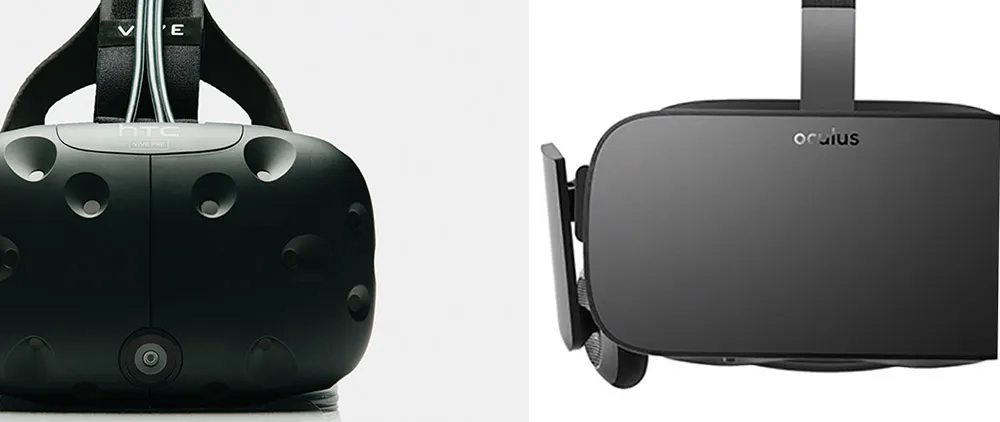Competing VR headsets from Facebook and HTC have now placed most of their cards on the table. As of today, it is known when both the Oculus Rift and HTC Vive will ship, what they will cost, and what will be inside each box. As neck and neck as things are, an informed consumer needs to look at every point of comparison before making the final purchase. A recent update to the Vive’s official website reveals the PC specs required to run the system and may cause that pro and con list in your notebook to grow even longer.
Here are the two recommended PC specs side by side:
| Components | Rift Ready PC Specs | Vive Ready PC Specs |
| Graphics Card (GPU) | NVIDIA GTX 970 or AMD 290 equivalent or greater | NVIDIA GTX 970 / AMD 290 equivalent or greater |
| Processor (CPU) | Intel i5-4590 equivalent or greater | Intel® i5-4590 / AMD FX 8350 equivalent or greater |
| Memory (RAM) | 8GB+ RAM | 4GB+ RAM |
| Video Output | HDMI 1.3 video output | HDMI 1.4 or DisplayPort 1.2 or newer |
| USB ports | 3x USB 3.0 ports and 1x USB 2.0 port | 1x USB 2.0 or greater port |
| Operating System | Windows 7 64-bit (Service Pack 1) or newer | Windows 7 64-bit (Service Pack 1) or newer |
The two headsets have identical requirements in terms of graphics cards and operating systems. The first major point of divergence comes from the Vive, which should allow people who use the right high-powered AMD chips for both their GPUs and CPUs to run SteamVR games. Oculus, however, used benchmarks that found:
“No AMD CPUs had the sufficient single-threaded performance to meet the cut-off, hence why AMD CPUs will fail on the Compatibility Tool. That said, depending on the game or engine used, performance may be acceptable (for example, if the app takes advantage of multi-threading). You also won’t be blocked from using a less powerful CPU, so you are free to try games with your current setup and see if the performance is acceptable to you.”
The Vive recommended specification also shows half as much RAM needed as the Rift and only USB 2.0 port, so if your computer hasn’t been upgraded to USB 3.0 that would be an added cost to get the full Rift experience.
Lastly, the video output on your machine needs to be HDMI 1.3 video or newer for Rift, while Vive will work with either HDMI 1.4 or DisplayPort 1.2 or newer.
Overall, the lower RAM requirements and more palatable USB demands seem to give the Vive a slight edge over the Rift in terms of creating a lower barrier-to-entry for consumers. The Vive website is also offering links to several Vive Ready PCs from the likes of HP, Alienware, and MSI. Oculus and its retail partners are currently offering bundles for a headset and a Rift Ready PC.




























